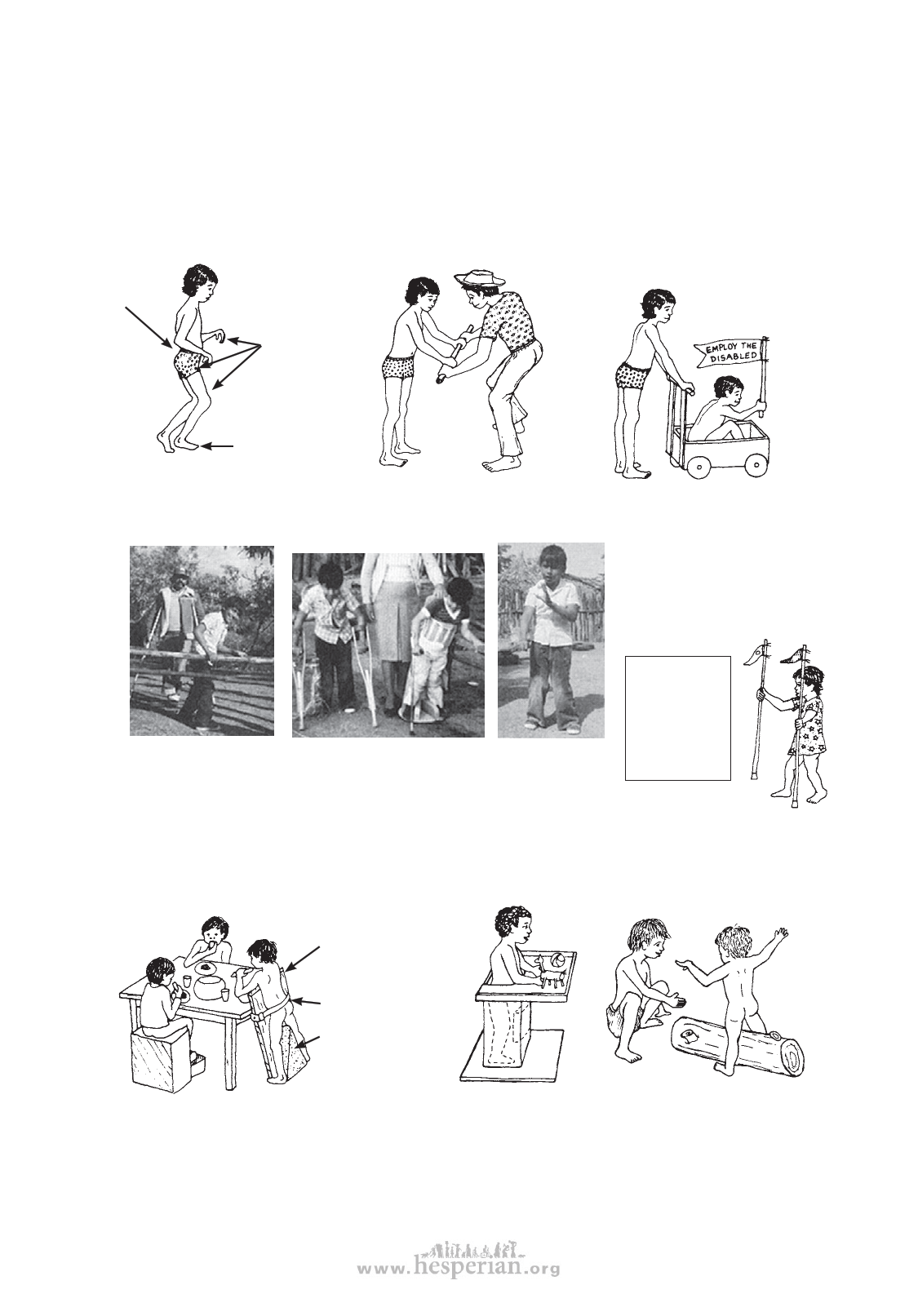
CEREBRAL PALSY
Standing
Many children with cerebral palsy stand and walk in strange positions. A child’s
unsure balance often increases the uncontrolled tightening of certain muscles and
makes balance even more difficult.
As a result the child stands
in an awkward position that
can lead to deformities and
contractures.
swayback
When you help the child keep her
balance, she is less tense and can
stand straighter.
Look for ways to provide
similar assistance during
play and other activities.
Here a cart
provides easier
balance and keeps
the arms straight.
bending
leading to
contractures
99
tiptoeing
Two sticks can help
the child once she
develops some standing
balance. At first you
can hold the tops of
the sticks. But let go as
soon as possible.
Miguelito began to walk
at age 8—first on parallel
bars.
Soon he learned to use
crutches. Here he races
another child who is learning
to walk.
And now he can
walk alone.
CAUTION:
Be sure sticks
are taller than
child so that
she will not
injure herself
if she falls.
The child who cannot yet stand alone can be placed in a standing frame for an hour
or 2 each day.
board or plywood
leaned against the table
strap (if needed)
wedge made from
cardboard, foam,
or other material
Even for the child who may never stand alone or walk, standing in a frame helps
prevent deformities. It also helps the leg bones grow and stay strong. Start at about
the age normal children begin to stand—around one year old.
For ideas on ‘standing frames’ see p. 574 and 575.
disabled village children